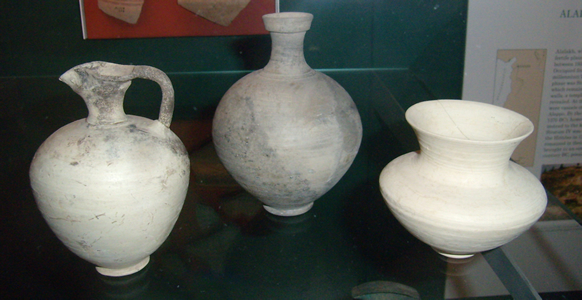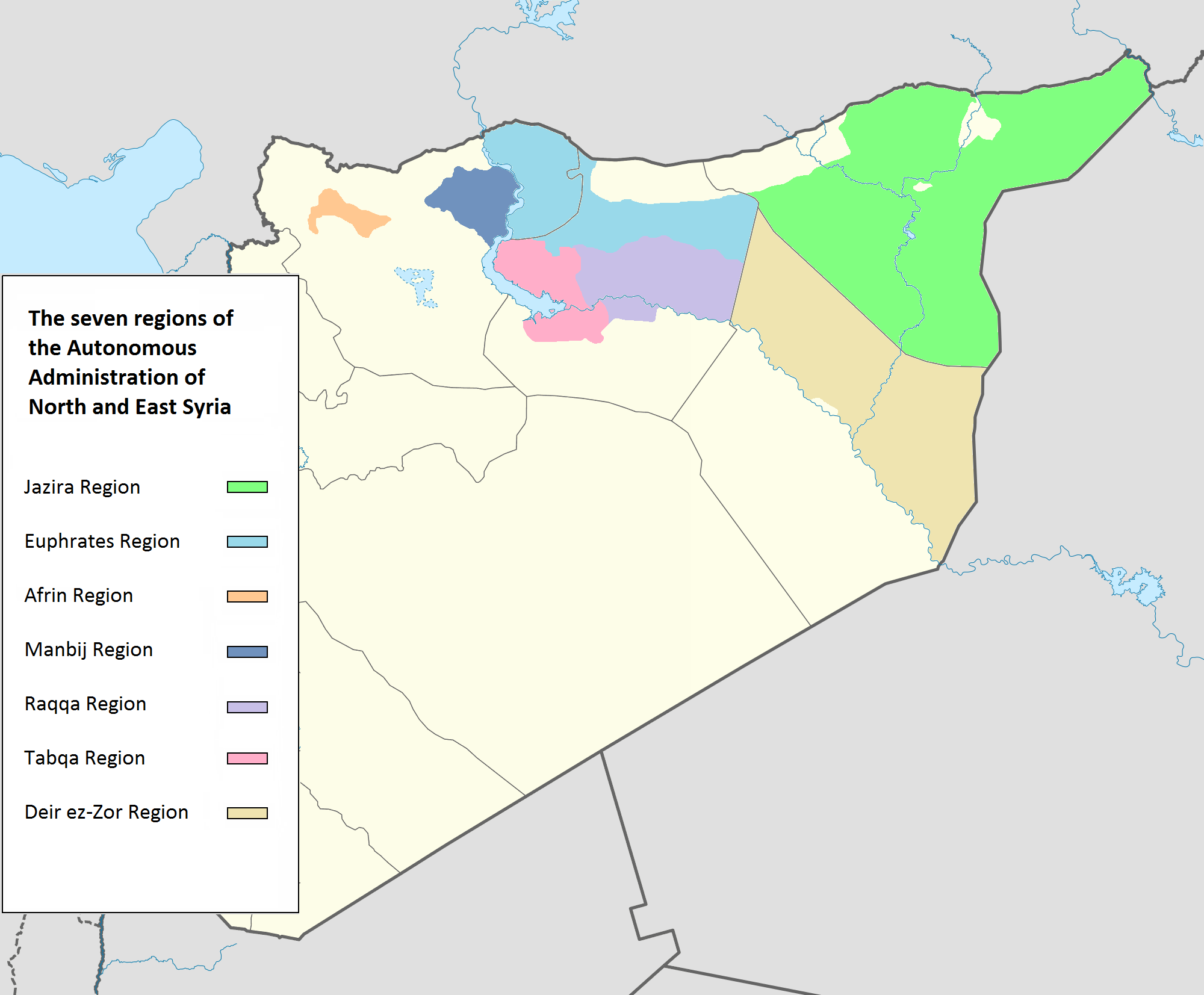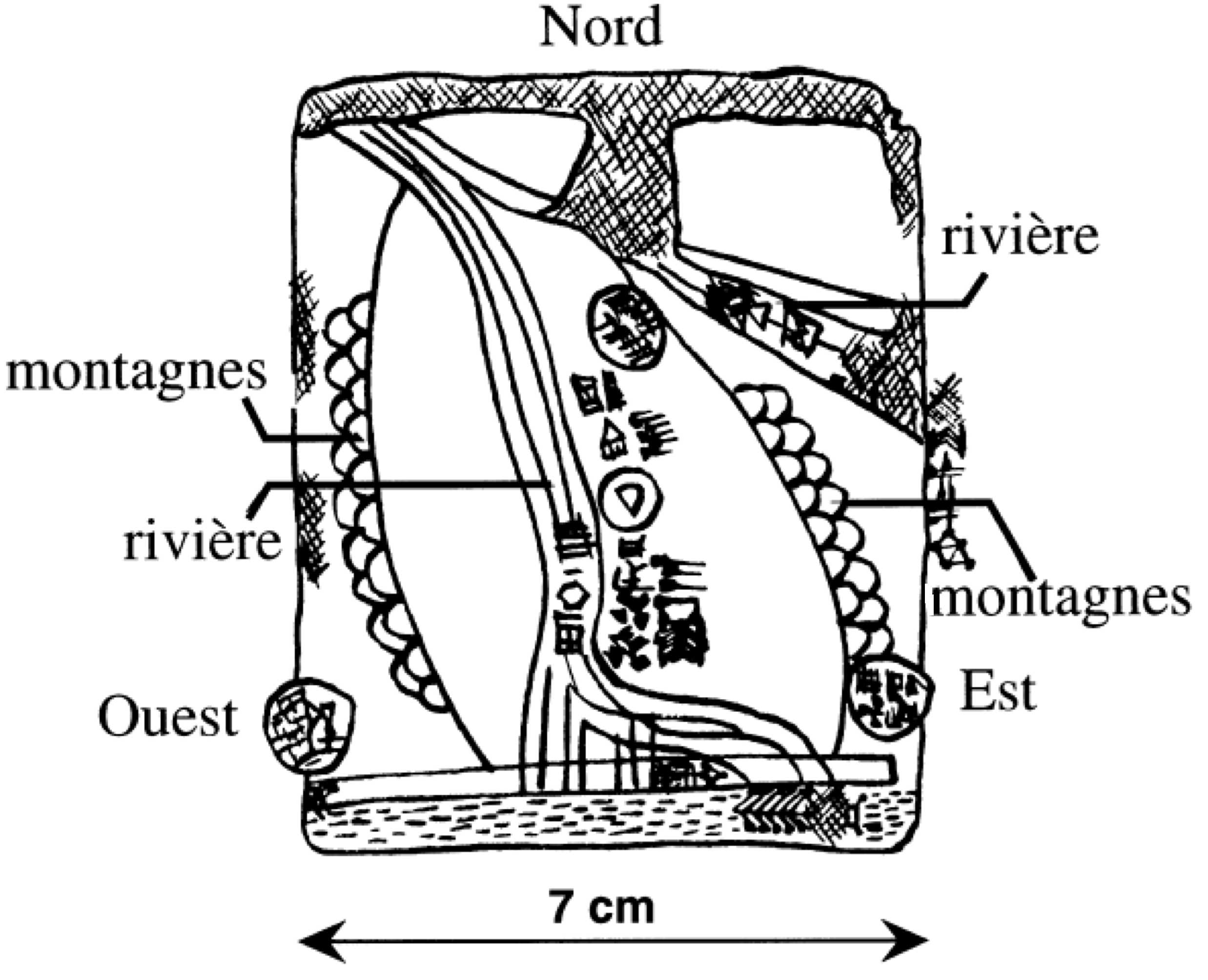|
Saushtatar
Šauštatar (also spelled Shaushtatar) was the King of Mitanni in the fifteenth century BC. He significantly expanded the Mitanni Empire to include Assyria and Nuzi in the east to Alalakh and Kizzuwatna in the west. He was in conflict with Thutmose III competing for territory in Syria. Attestations Two tablets of Shaushtatar (AIT 13 and AIT 14), legal decisions, were found at Alalakh. They mention Niqmepa, the king of Alalakh, providing a synchronism. A tablet of Shaushtatar was found at Tall Bazi, granting land. Name The Hurrian word šauša means "big, great" and the theonym Šauša referred to the local version of the great goddess Ištar. Reign Shaushtatar was the son and successor of Parshatatar. By the time he ascended the throne ca. the 15th century BC, his father had installed Hurrian client kings in a number of cities, making it easier for Shaushtatar to make Mittani a Mesopotamian power. Invasion of Assyria Now freed from the constant threat undergone by Mitanni o ... [...More Info...] [...Related Items...] OR: [Wikipedia] [Google] [Baidu] |
Alalakh
Alalakh (''Tell Atchana''; Hittite: Alalaḫ) is an ancient archaeological site approximately northeast of Antakya (historic Antioch) in what is now Turkey's Hatay Province. It flourished as an urban settlement in the Middle and Late Bronze Age, c. 2000–1200 BC. The city contained palaces, temples, private houses and fortifications. The remains of Alalakh have formed an extensive mound covering around 22 hectares. In the Late Bronze Age, Alalakh was the capital of the local kingdom of Mukiš. The first palace was built around 2000 BC, and likely destroyed in the 12th century BC. The site was thought to have never been reoccupied after that, but archaeologist Timothy Harrison showed, in a (2022) lecture's graphic, it was inhabited also in Amuq Phases N-O, Iron Age, c. 1200–600 BC.Harrison, Timothy, Lynn Welton, and Stanley Klassen, (13 July 2022)"Highway to Science: The Tayinat and CRANE Projects" ARWA Association, Lecture min. 6:58, n the graphic "Iron Age, Ca. 1200-600 BCE ... [...More Info...] [...Related Items...] OR: [Wikipedia] [Google] [Baidu] |
Mitanni
Mitanni (–1260 BC), earlier called Ḫabigalbat in old Babylonian texts, ; Hanigalbat or Hani-Rabbat in Assyrian records, or in Ancient Egypt, Egyptian texts, was a Hurrian language, Hurrian-speaking state in northern Syria (region), Syria and southeast Anatolia (modern-day Turkey) with Indo-Aryan languages, Indo-Aryan Indo-Aryan superstrate in Mitanni, linguistic and political influences. Since no histories, royal annals or chronicles have yet been found in its excavated sites, knowledge about Mitanni is sparse compared to the other powers in the area, and dependent on what its neighbours commented in their texts. The Hurrians were in the region as of the late 3rd millennium BC. A king of Urkesh with a Hurrian name, Tupkish, was found on a clay sealing dated at Tell Mozan.Salvini, Mirjo. "The earliest evidences of the Hurrians before the formation of the reign of Mittanni." Urkesh and the Hurrians Studies in Honor of Lloyd Cotsen. Urkesh/Mozan Studies Bibliotheca Mesopotamic ... [...More Info...] [...Related Items...] OR: [Wikipedia] [Google] [Baidu] |
Tall Bazi
Tall Bazi, is an ancient Near East archaeological site in Raqqa Governorate of Syria in the same general area as Mari and Ebla. It is located on the east bank of Euphrates river in upper Syria, about 60 kilometers south of Turkey border. It is considered a twin site to the adjacent Tell Banat Complex. Both were occupied in the 3rd and 2nd millennium BC with Banat being the focus in the early part and Bazi in the later. Tall Bazi has been proposed as the location of Armanum, known from texts of Sargon and Naram-Sin in the Akkadian period, during the reign of Naram-Sin of Akkad. It was occupied into the Mitanni period, with an occupational gap after c. 2300 BC, at which time it was destroyed. In the Late Roman Empire a large building was constructed at the top of the main mound, using the remaining Late Bronze Age fortification walls. Location In ancient times, the site consisted of a large lower town and the high citadel. Also nearby, about one half a kilometer to the south ... [...More Info...] [...Related Items...] OR: [Wikipedia] [Google] [Baidu] |
Euphrates
The Euphrates ( ; see #Etymology, below) is the longest and one of the most historically important rivers of West Asia. Tigris–Euphrates river system, Together with the Tigris, it is one of the two defining rivers of Mesopotamia (). Originating in Turkey, the Euphrates flows through Syria and Iraq to join the Tigris in the Shatt al-Arab in Iraq, which empties into the Persian Gulf. The Euphrates is the List of longest rivers of Asia, fifteenth-longest river in Asia and the longest in West Asia, at about , with a drainage area of that covers six countries. Etymology The term ''Euphrates'' derives from the Koine Greek, Greek ''Euphrátēs'' (), adapted from , itself from . The Elamite name is ultimately derived from cuneiform 𒌓𒄒𒉣; read as ''Buranun'' in Sumerian language, Sumerian and ''Purattu'' in Akkadian language, Akkadian; many cuneiform signs have a Sumerian pronunciation and an Akkadian pronunciation, taken from a Sumerian word and an Akkadian word that mean ... [...More Info...] [...Related Items...] OR: [Wikipedia] [Google] [Baidu] |
Amenhotep II
Amenhotep II (sometimes called Amenophis II and meaning "Amun is Satisfied") was the seventh pharaoh of the Eighteenth Dynasty of Egypt. He inherited a vast kingdom from his father Thutmose III, and held it by means of a few military campaigns in Syria; however, he fought much less than his father, and his reign saw the effective cessation of hostilities between Egypt and Mitanni, the major kingdoms vying for power in Syria. His reign is usually dated from 1427 to 1401 BC. His consort was Tiaa, who was barred from any prestige until Amenhotep's son, Thutmose IV, came into power. Family and early life Amenhotep II was born to Thutmose III and a minor wife of the king: Merytre-Hatshepsut. He was not, however, the firstborn son of this pharaoh; his elder brother Amenemhat, the son of the great king's chief wife Satiah, was originally the intended heir to the throne since Amenemhat was designated the 'king's eldest son" and overseer of the cattle of Amun in Year 24 of Thut ... [...More Info...] [...Related Items...] OR: [Wikipedia] [Google] [Baidu] |
Palestine (region)
The region of Palestine, also known as historic Palestine, is a geographical area in West Asia. It includes the modern states of Israel and Palestine, as well as parts of northwestern Jordan in some definitions. Other names for the region include Canaan, the Promised Land, the Land of Israel, or the Holy Land. The earliest written record Timeline of the name Palestine, referring to Palestine as a geographical region is in the ''Histories (Herodotus), Histories'' of Herodotus in the 5th century BCE, which calls the area ''Palaistine'', referring to the territory previously held by Philistia, a state that existed in that area from the 12th to the 7th century BCE. The Roman Empire conquered the region and in 6 CE established the province known as Judaea (Roman province), Judaea. In the aftermath of the Bar Kokhba revolt (132–136 CE), the province was renamed Syria Palaestina. In 390, during the Byzantine period, the region was split into the provinces of Palaestina Prima, Pal ... [...More Info...] [...Related Items...] OR: [Wikipedia] [Google] [Baidu] |
Kizzuwatna
Kizzuwatna (or Kizzuwadna; in Ancient Egyptian ''Kode'' or ''Qode'') was an ancient Anatolian kingdom, attested in written sources from the end of the 16th century BC onwards, but though its origins are still obscure, the Middle Bronze Age in Cilicia (ca. 2000–1550 BC) can be seen as its possible formative period. Kisuwatna was situated mostly in the Cilician Plain of southeastern Anatolia, near the Gulf of İskenderun, in modern-day Turkey. The Central Taurus Mountains and the Amanus Mountains encircled it. The centre of the kingdom was the city of Kummanni, in the highlands. Etymology The name is said to be a Luwic transliteration (''kez-watni'') of the nešili ''kez-udne'', meaning "a country on this side (of the mountains)."Yakubovich, Ilya. (2010). ''Sociolinguistics of the Luvian Language''. A Dissertation Submitted to the Faculty of the Division of the Humanities In Candidacy For the Degree of Doctor of Philosophy. Department of Near Eastern Languages and Civiliz ... [...More Info...] [...Related Items...] OR: [Wikipedia] [Google] [Baidu] |
Nuzi
Nuzi (Hurrian Nuzi/Nuzu; Akkadian Gasur) at modern Yorghan Tepe (also Yorgan Tepa and Jorgan Tepe), Iraq was an ancient Mesopotamian city 12 kilometers southwest of the city of Arrapha (modern Kirkuk) and 70 kilometers southwest of Sātu Qala, located near the Tigris river. It was occupied from the Ubaid period in the 5th millennium BC until late in the 2nd millennium BC then, after a period of abandonment, in the Parthian era. It reached major importance in the Akkadian Empire period when it was known as Gasur and again in the Mitanni period when its name was Nuzi. History The site has about 15 occupational layers with 12 major strata several of which have subdivisions. The majority of excavation work at the site was on the Late Bronze Age levels with only some soundings to the older strata. Traces of Parthian era occupation were found on the surface.Pfeiffer, Robert H., "The Excavations at Nuzi: Preliminary Report of the Fourth Campaign", Bulletin of the American Schools of ... [...More Info...] [...Related Items...] OR: [Wikipedia] [Google] [Baidu] |
Mediterranean
The Mediterranean Sea ( ) is a sea connected to the Atlantic Ocean, surrounded by the Mediterranean basin and almost completely enclosed by land: on the east by the Levant in West Asia, on the north by Anatolia in West Asia and Southern Europe, on the south by North Africa, and on the west almost by the Morocco–Spain border. The Mediterranean Sea covers an area of about , representing 0.7% of the global ocean surface, but its connection to the Atlantic via the Strait of Gibraltar—the narrow strait that connects the Atlantic Ocean to the Mediterranean Sea and separates the Iberian Peninsula in Europe from Morocco in Africa—is only wide. Geological evidence indicates that around 5.9 million years ago, the Mediterranean was cut off from the Atlantic and was partly or completely desiccated over a period of some 600,000 years during the Messinian salinity crisis before being refilled by the Zanclean flood about 5.3 million years ago. The sea was an important rout ... [...More Info...] [...Related Items...] OR: [Wikipedia] [Google] [Baidu] |
Syria (region)
Syria, ( or ''Shaam'') also known as Greater Syria or Syria-Palestine, is a historical region located east of the Mediterranean Sea in West Asia, broadly synonymous with the Levant. The region boundaries have changed throughout history. However, in modern times, the term "Syria" alone is used to refer to the Syria, Syrian Arab Republic. The term is originally derived from Assyria, an Ancient Semitic-speaking peoples, ancient Semitic-speaking civilization centered in northern Mesopotamia, modern-day Iraq. During the Hellenistic period, the term Syria was applied to the entire Levant as Coele-Syria. Under Roman Empire, Roman rule, the term was used to refer to the Roman Syria, province of Syria, later divided into Phoenice (Roman province), Syria Phoenicia and Coele-Syria, Coele Syria, and to the province of Syria Palaestina. Under the Byzantine Empire, Byzantines, the provinces of Syria Prima and Syria Secunda emerged out of Coele Syria. After the Muslim conquest of the Levant ... [...More Info...] [...Related Items...] OR: [Wikipedia] [Google] [Baidu] |
Assyria
Assyria (Neo-Assyrian cuneiform: , ''māt Aššur'') was a major ancient Mesopotamian civilization that existed as a city-state from the 21st century BC to the 14th century BC and eventually expanded into an empire from the 14th century BC to the 7th century BC. Spanning from the early Bronze Age to the late Iron Age, modern historians typically divide ancient Assyrian history into the Early Assyrian period, Early Assyrian ( 2600–2025 BC), Old Assyrian period, Old Assyrian ( 2025–1364 BC), Middle Assyrian Empire, Middle Assyrian ( 1363–912 BC), Neo-Assyrian Empire, Neo-Assyrian (911–609 BC), and Post-imperial Assyria, post-imperial (609 BC– AD 240) periods, based on political events and gradual changes in language. Assur, the first Assyrian capital, was founded 2600 BC, but there is no evidence that the city was independent until the collapse of the Third Dynasty of Ur, in the 21st century BC, when a line of independent kings starting with Puzur-Ashur I began rulin ... [...More Info...] [...Related Items...] OR: [Wikipedia] [Google] [Baidu] |
Assur
Aššur (; AN.ŠAR2KI, Assyrian cuneiform: ''Aš-šurKI'', "City of God Aššur"; ''Āšūr''; ''Aθur'', ''Āšūr''; ', ), also known as Ashur and Qal'at Sherqat, was the capital of the Old Assyrian city-state (2025–1364 BC), the Middle Assyrian Empire (1363–912 BC), and for a time, of the Neo-Assyrian Empire (911–609 BC). The remains of the city lie on the western bank of the Tigris River, north of the confluence with its tributary, the Little Zab, in what is now Iraq, more precisely in the al-Shirqat District of the Saladin Governorate. Occupation of the city itself continued for approximately 3,000 years, from the Early Dynastic Period to the mid-3rd century AD, when the city was sacked by the Sasanian Empire. The site is a World Heritage Site and was added to that organisation's list of sites in danger in 2003 as a result of a proposed dam, which would flood some of the site. It has been further threatened by the conflict that erupted following the US-led ... [...More Info...] [...Related Items...] OR: [Wikipedia] [Google] [Baidu] |










